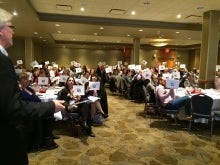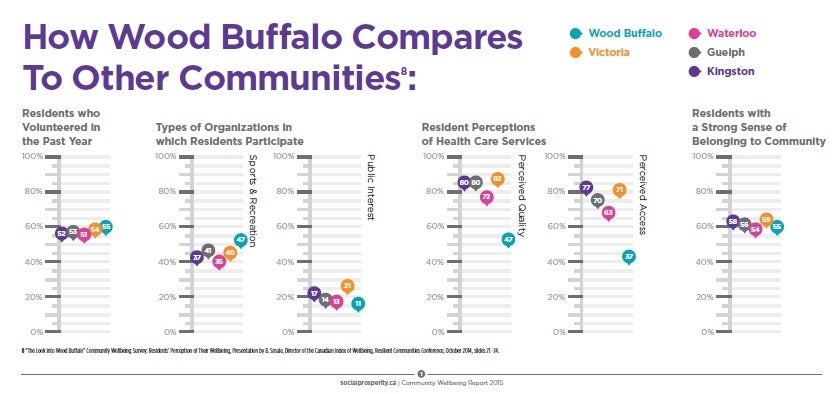CIW Engagement

FuseSocial is an organization based in Fort McMurray, Alberta formed in 2013 at the amalgamation of three community organizations: Leadership Wood Buffalo, Volunteer Wood Buffalo, and Non-profit Sector Link Wood Buffalo. Their focus is to "strengthen social profits through education, development, innovation and collaboration" (1). Following a first CIW Community Wellbeing Survey in 2014, FuseSocial, in collaboration with many local organizations, launched a second CIW Survey in 2019 to assess how residents of the Regional Municipality of Wood Buffalo's wellbeing is faring currently, and how it has changed since 2014.
Wood Buffalo Second Community Wellbeing Survey 2019
From April to August 2019, all Wood Buffalo households were invited to complete the second CIW Community Wellbeing Survey. The survey includes focused questions in the CIW's eight defined domains of wellbeing and will help measure quality of life of residents across the Regional Municipality of Wood Buffalo. The CIW is preparing reports outlining the results of this survey, with the first report scheduled for release in late 2019. The results of the survey will be used by a wide range of local organizations to facilitate conversations aimed at developing innovative solutions to pressing challenges that affect quality of life for Wood Buffalo residents. Additionally, as the second survey, this community has the benefit of comparing the 2014 and 2019 survey data, in order to make changes that reflect the current needs of Wood Buffalo residents.

Wood Buffalo First Community Wellbeing Survey 2014
The CIW partnered with Social Prosperity Wood Buffalo and a collaborative of local organizations including the regional government to conduct the first CIW Community Wellbeing Survey in Wood Buffalo.
Report #1: A Profile of the Wellbeing of Wood Buffalo Region Residents
- This initial report presents preliminary findings from the residents’ responses to all of the questions based on each of the eight CIW domains. The data were weighted to ensure that results are representative geographically within the Wood Buffalo Region and that the sex and age distribution matched the profile for the Wood Buffalo Region based on the 2011 Census.
Report #2: Sense of Belonging, Residency and Household Type, and Wellbeing among Wood Buffalo Region Residents
- This second report provides a more in-depth look at the results of the survey. In discussion with Social Prosperity Wood Buffalo and its partners, two factors were selected as focal lenses for further analysis of the survey results: (1) residency and household type, and (2) sense of belonging to the local community. By exploring the survey results through these lenses, a deeper understanding emerges concerning two key aspects that both influence and are influenced by the wellbeing of the residents of Wood Buffalo Region.
Report-back session and third report

About 140 people attended a 'report-back' event on October 1, 2014 in Ft. McMurray. CIW Director, Dr. Bryan Smale, presented results from the 2014 Community Wellbeing Survey and a panel of local experts analysed the results and spoke about what can be done to address issues such as child care, accessibility of health care, and work/life balance.
Report #3: A Profile of Wood Buffalo residents Based on their Level of Wellbeing
- The CIW was asked to create a third technical report after a report-back session of the initial survey results. Overall, results showed that higher levels of wellbeing were associated with such things as: greater participation in community activities, better health, stronger feelings of time adequacy, and demographic characteristics like higher household income, being partnered, and not having a disability.
In order to build a trend line of wellbeing data over time, it is hoped that a collaborative of interested organizations in the Regional Municipality of Wood Buffalo will engage the CIW to survey a random sample of households every five years.

Community Outcomes
Resilient Wood Buffalo: A Guide to Understanding Wellbeing in Wood Buffalo (2015)
Look into Wood Buffalo Community Wellbeing Survey Process Report (2014).
- In the spirit of collective impact, this report documents the process for future iterations in Wood Buffalo and for other communities across Canada seeking to conduct a CIW Community Wellbeing Survey.
References: